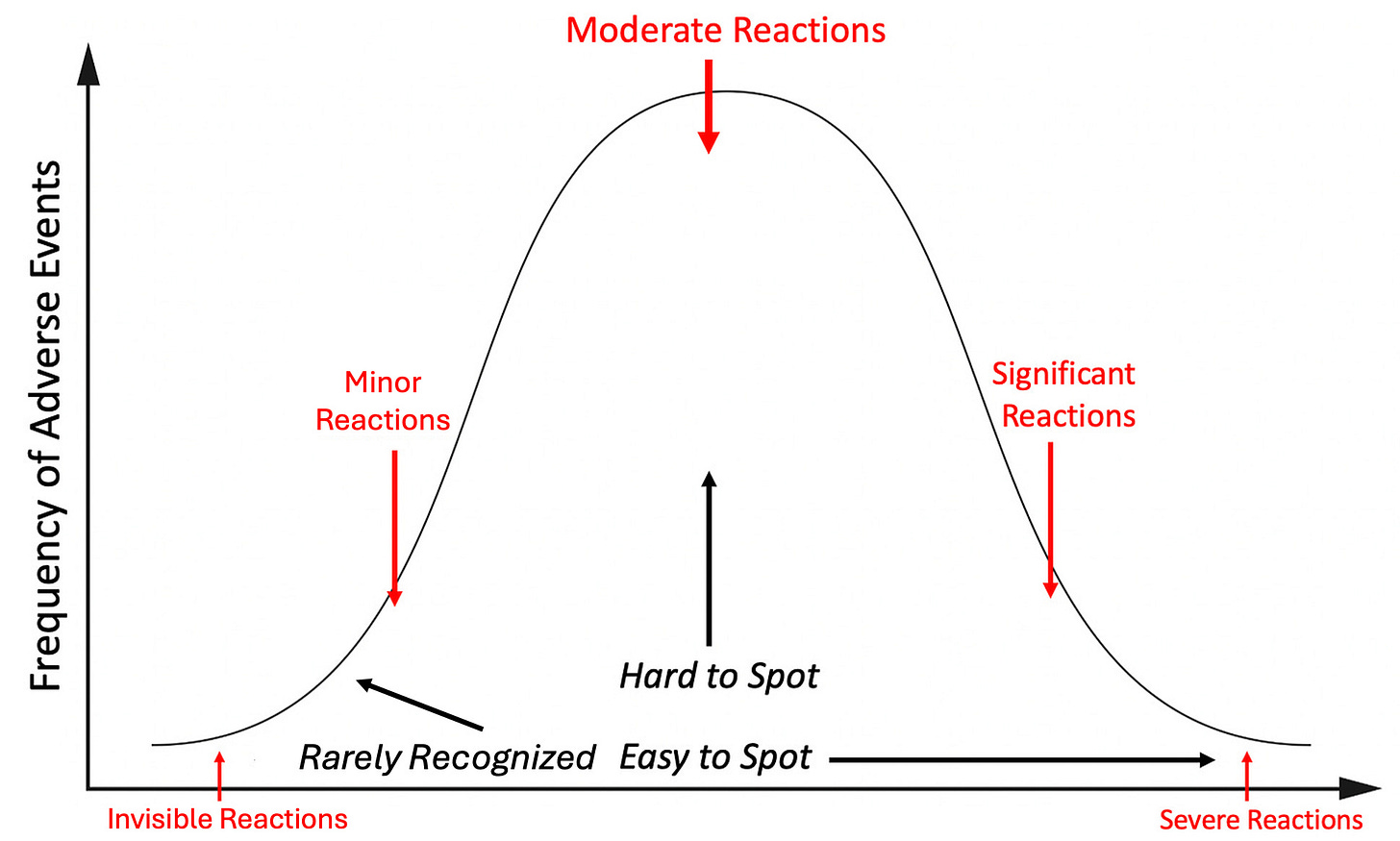For “rare conditions”.
Vaccines all have “rare side effects”. Environmental chemicals and electromagnetic fields affect every individual differently. Each body is one of kind and responds uniquely to its environment.
How Your Clothes and Their Materials Shape Your Health
This article from AMD discusses a surprising (to me, at least) source of health maladies arising from clothing, cosmetics and chemicals contained therein. He uses the Bell Curve to explain why symptoms can be rare in a population but very real to those few who are afflicted.
Exceptions to the “norm”
There are many examples of conditions that arise within a “normal distribution” - the Bell Curve - that are “rare” yet significant occurrences. Some examples.
5G and other sources of EMF radiation produce debilitating effects to the health of some people.
adverse reactions to the Covid-15 vaccines have been widely reported in a relatively small proportion of the greater population. Some reactions are severe.
the odds of dying in a car crash as 1 in 554. Displayed in a Bell Curve, driving has a small risk of death. Few people take the risk seriously until a traffic fatality hits home.
Bell Curve insights.
The risks associated with chemicals in my clothes, shampoo and other things that affect the largest organ in my body - my skin - did not occur to me until reading AMD’s article.
His use of the Bell Curve now makes the idea of “rare” events more intuitive and understandable.
It also explains why some people become frustrated when precious little effective help is available from medical professionals to address their “rare” health issues.
Limited resources
Logically, research and clinical funding by governments is allocated to where the need is considered greatest, not for the marginal needs. Those patients afflicted by “rare” conditions which occur at the extreme end of the Bell Curve are not served as well. Some even get a reputation as a “crank” or hypochondriac by some health care providers who have been unable to help.
Both patient and provider are understandably frustrated when an accurate diagnosis is elusive and when effective treatments are unavailable.
AMD’s article offers encouragement and good advice.
The Bell Curve narrative provides valuable insights to folks who suffers from “rare” conditions. By understanding why Health establishments seem unwilling or ill-prepared to help them, it will encourage greater Personal Responsibility and initiative for investigating and finding alternative treatments beyond the scope of those available from our public health establishments. This may prove a good strategy to find remedies for what ails them, especially if they become armed with trustworthy sources of information and consider them with a critical mind.
My Sources of Trusted Health Information
The Canadian Citizens Care Alliance (CCCA) is a good source of medical information made available to the general public. The goal is to help them become better prepared to help themselves in health matters.
Peter Attia MD is my personal favourite source of information concerning longevity and quality of life. He interviews top experts on the full range of health topics that interest me: exercise, nutrition, immune system robustness, preventing various chronic illnesses associated with metabolic syndrome, and more. His podcasts are the single best source of information that I have found on these topics.
A Midwestern Doctor (AMD) has alerted me to many medical issues that had not previously been on my radar. His commentary is always brilliant.




